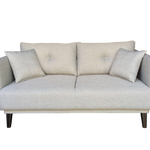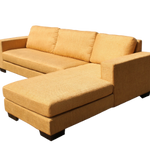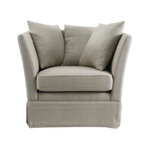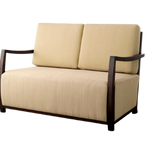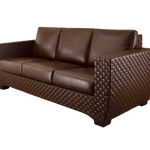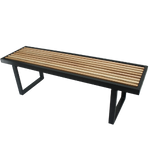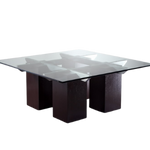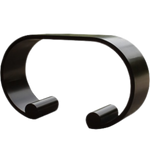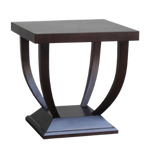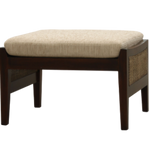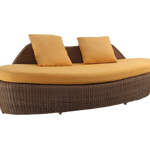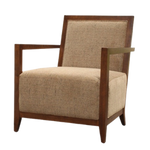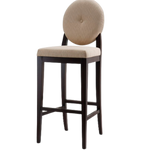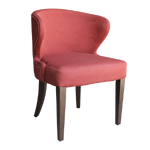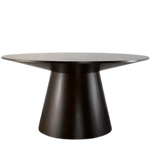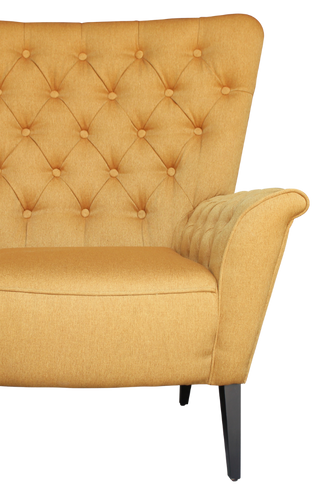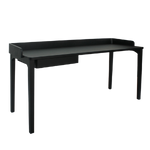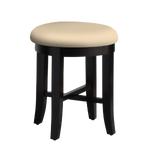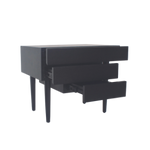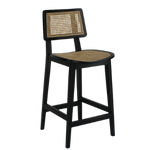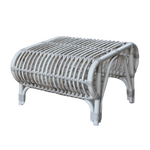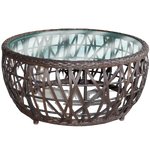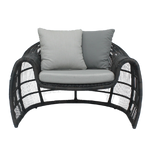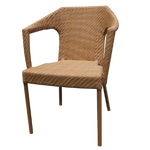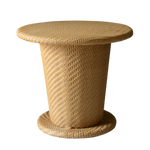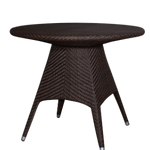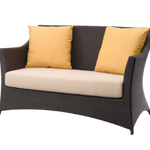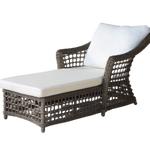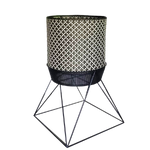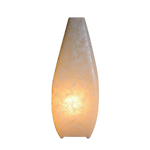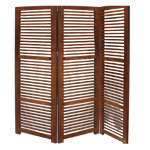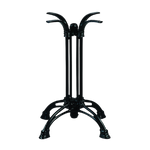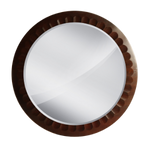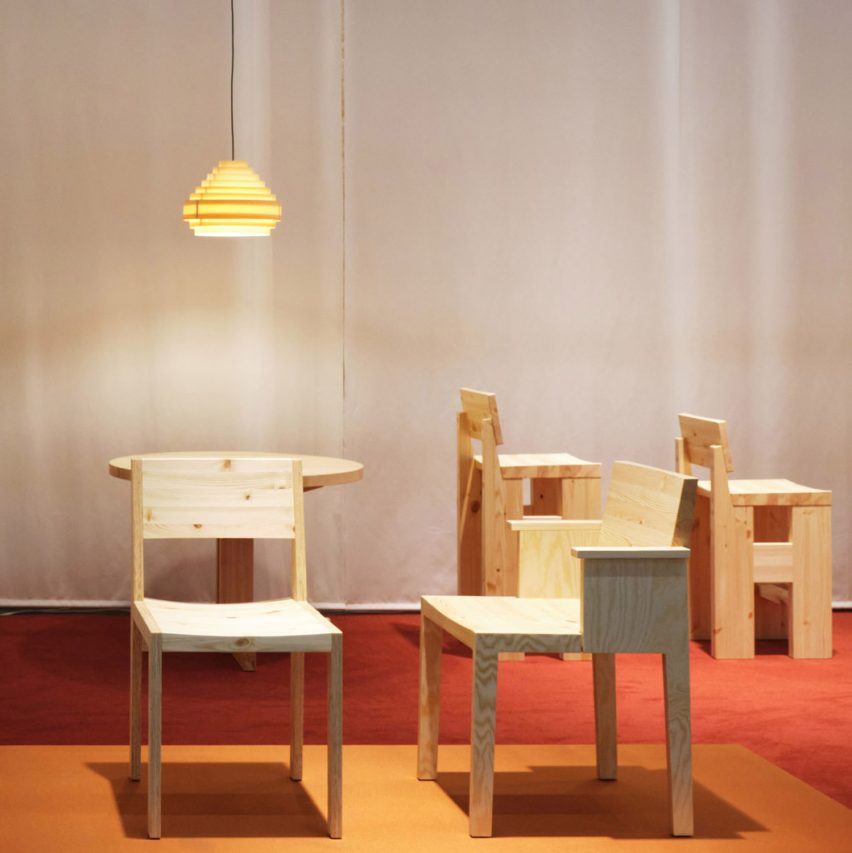
One of the main trends at this year’s Stockholm Furniture Fair was the use of pine, with designers using heat-treated pine for outdoor furniture, creating lighting from pine veneer and reevaluating waterlogged pine.
In Scandinavia, pinewood has become more popular in recent years as younger generations begin to appreciate the material.
While it previously had connotations to the lacquered, yellowing pinewood furniture of the 1970s, pine is being reappraised by many designers for its ease of use and local availability.
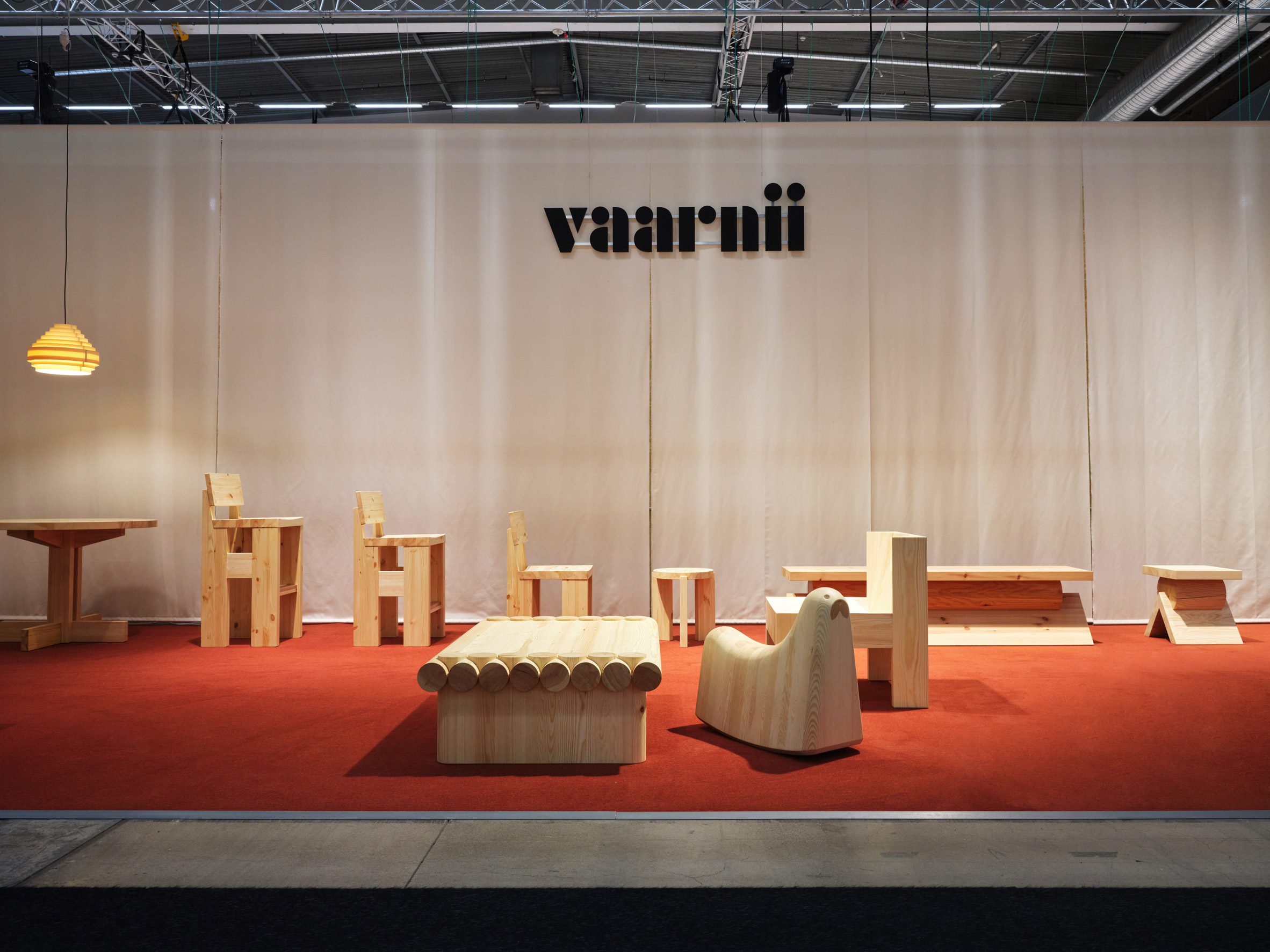
At Stockholm Furniture Fair, there was a wide selection of pinewood furniture in different shapes and forms, with some designers using untreated pale wood that will weather with age while others chose to heat treat or stain the material.
Finnish brand Vaarnii, which works solely in pine, showcased its collaboration with British designer Faye Toogood as well as a new chair by French designer Ronan Bouroullec.
Pine filled its entire stand at the annual furniture fair, which also featured a remade pine-veneer version of Swedish designer Hans-Agne Jakobsson’s 1960s pendant lamps.
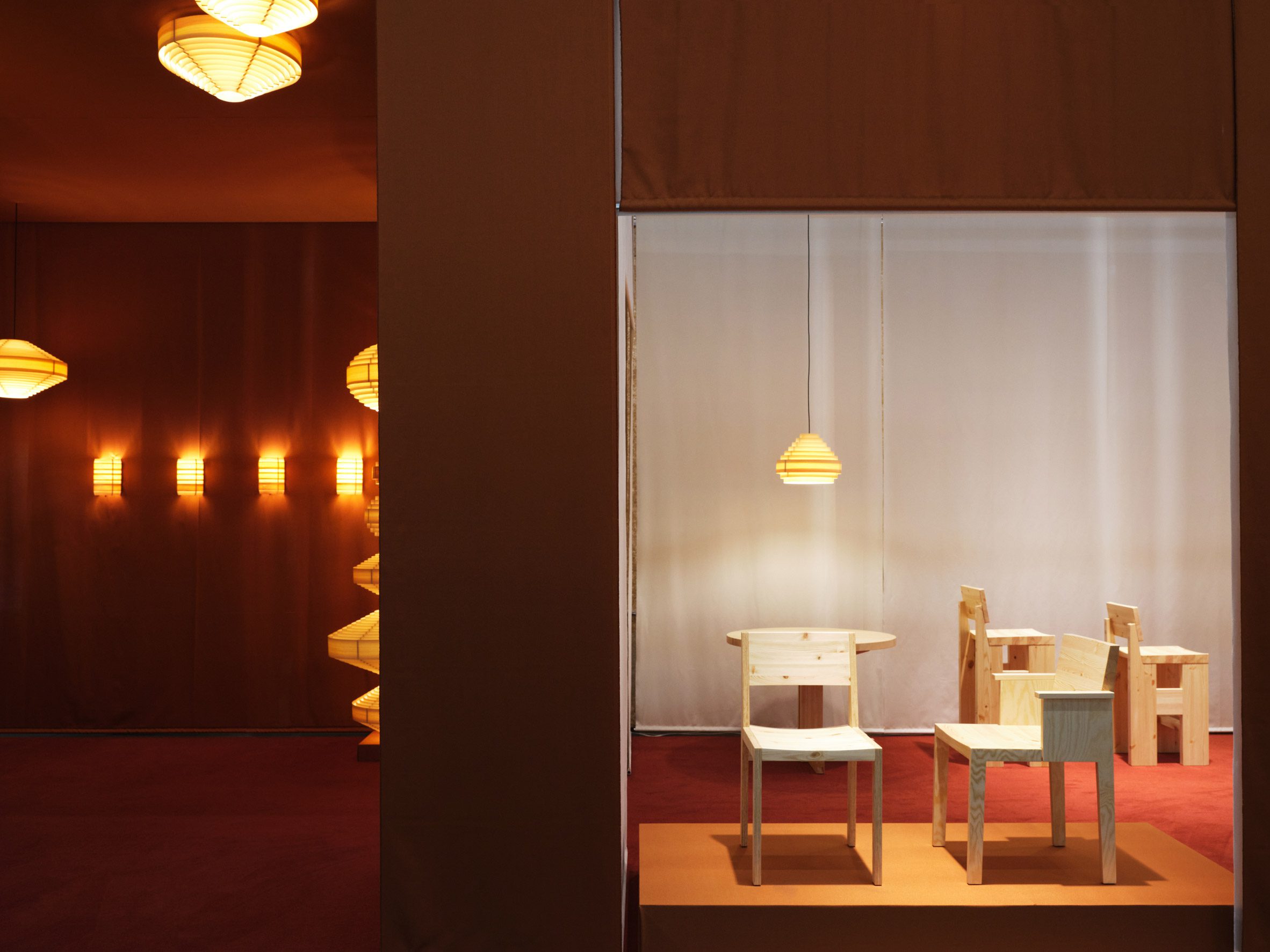
CEO Antti Hirvonen thinks the reason for pine’s newfound popularity is that it feels like a more unusual option since the material has languished in the background for a while.
“I suppose that the design world is just interested in all things new, and sometimes old things can be new things,” he told Dezeen.
“We’ve seen so many pieces made in oak over the years, we’ve seen so many pieces in birch and ash, and pine has always been a bit of an underdog.”
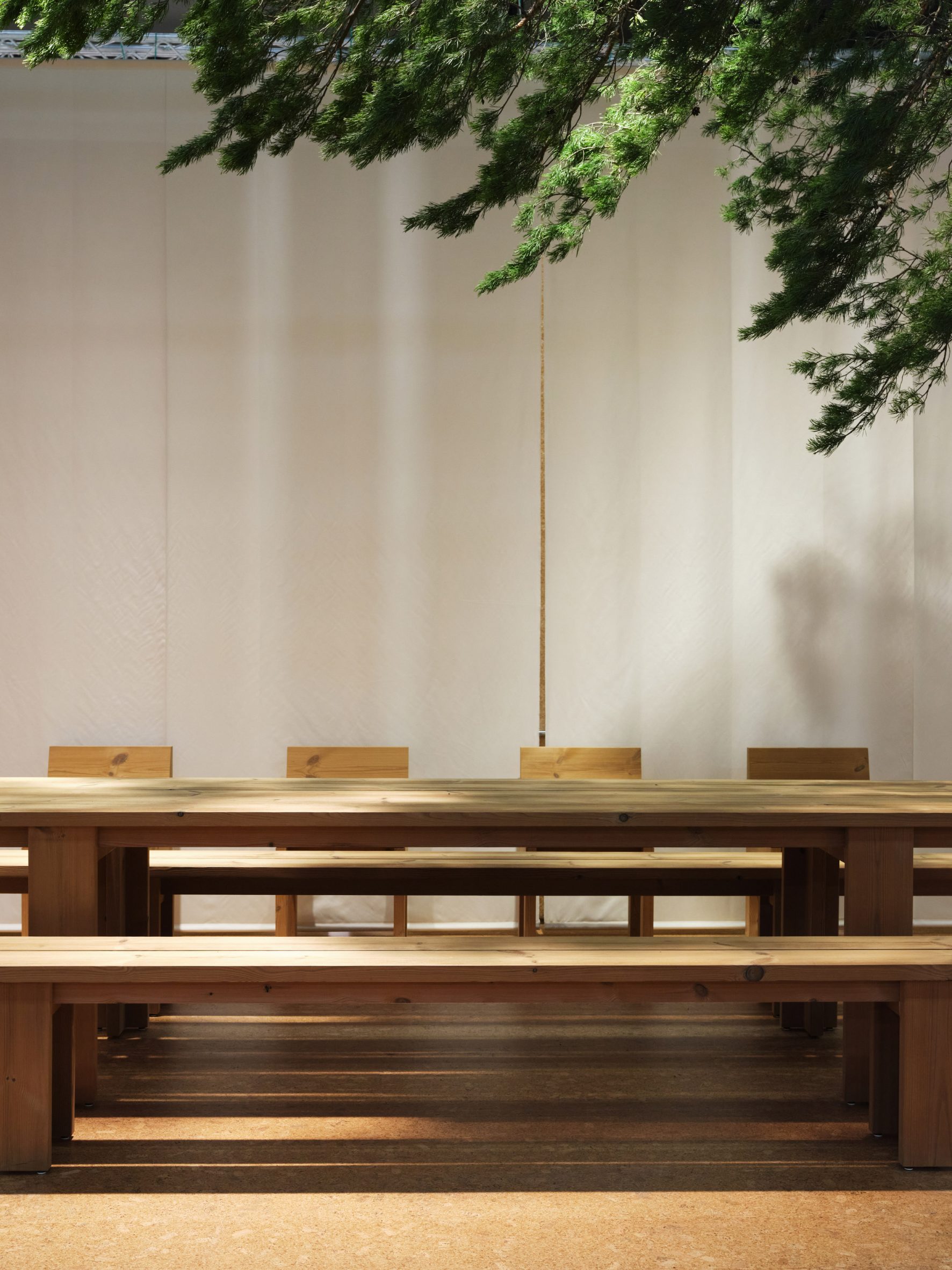
“It’s a beautiful material, but it’s been overlooked for many years,” he added. “We solely work in pine and it’s lovely to see that some other people are equally silly and getting into pine.”
Japanese brand Ishinomaki Laboratory, meanwhile, showcased a collection of pine furniture made together with seven Scandinavian designers as part of a workshop in designer Staffan Holm’s studio.
The collection was made from heat-treated Lunawood pine for the brand’s Made in Local initiative, which aims to bring Ishinomaki Laboratory’s designs to a more local context.
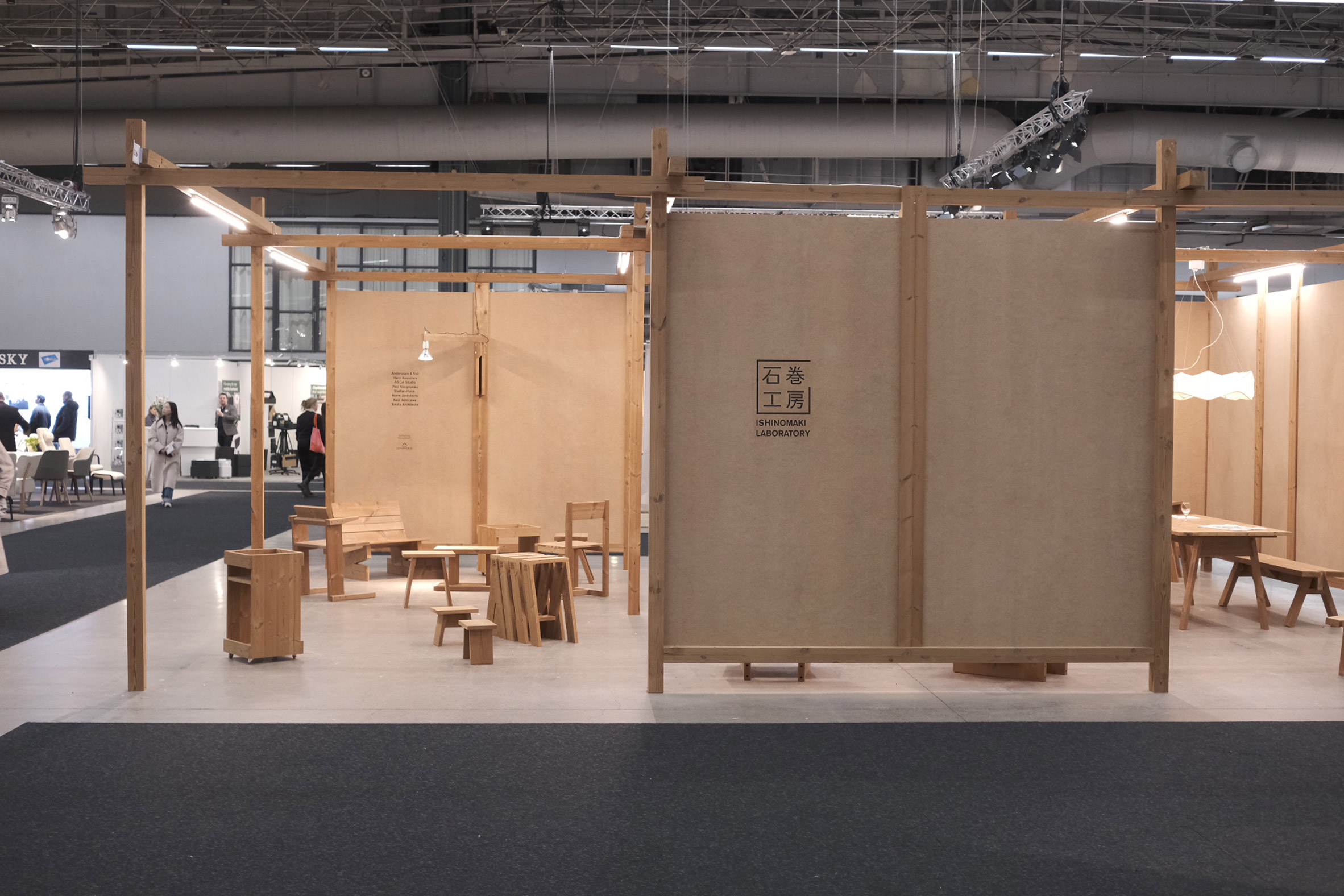
“Usually pine isn’t for furniture, it’s an architectural material,” Ishinomaki Laboratory founder Keiji Ashizawa told Dezeen.
“But we should be using more soft wood [for furniture], not just pine but also cedar, and it’s an easy material to use for DIY.”
He believes pine is a good alternative to more commonly used wood types, with a softness that makes it very useable for furniture.
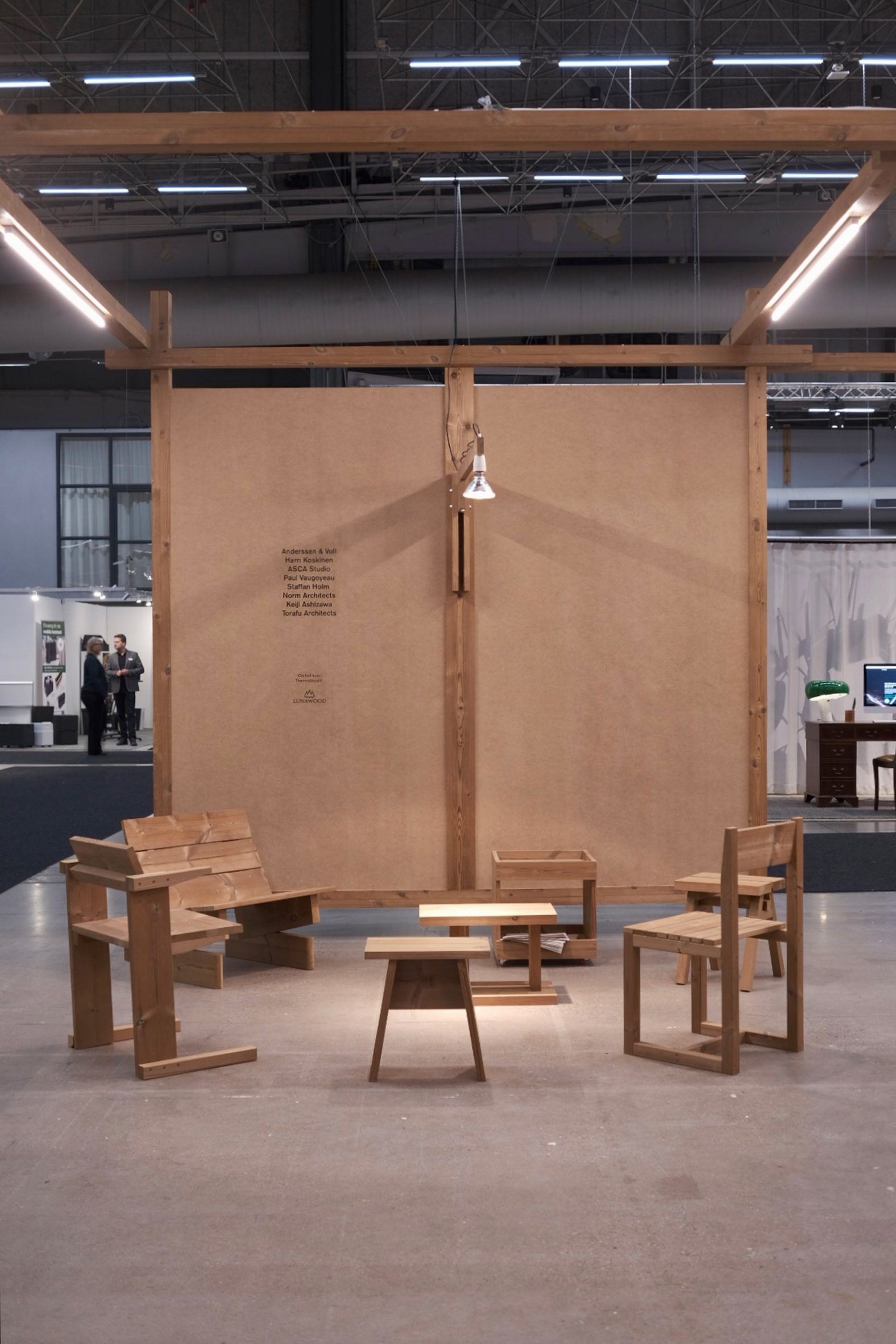
“I think it’s a good alternative material, it’s a lovely material,” Ashizawa said. “It grows so fast that it’s very sustainable, and even without a cushion people can feel that it’s comfortable.”
Ishinomaki Laboratory only showed outdoor furniture at the tradeshow but also plans to make pine furniture for indoor use.
Also at the fair, Swedish architect and designer Per Nadén showcased pine furniture made by his brand Nadén from wood that was planted, logged and milled just an hour from his workshop.
“It is a naturally managed forest,” Nadén told Dezeen. “We call it nature-closed foresty, which means that you try to use natural processes in the forest, instead of just cutting everything down.”
“That creates biodiversity and resilience. Trees are only felled when they’re ready and old trees are left as homes for birds and insects.”
Nadén’s fair stand showcased both a shelving system made from untreated pine, which has a very pale colour, and a table that was treated with linseed oil and left to age to demonstrate the possibilities of the material.
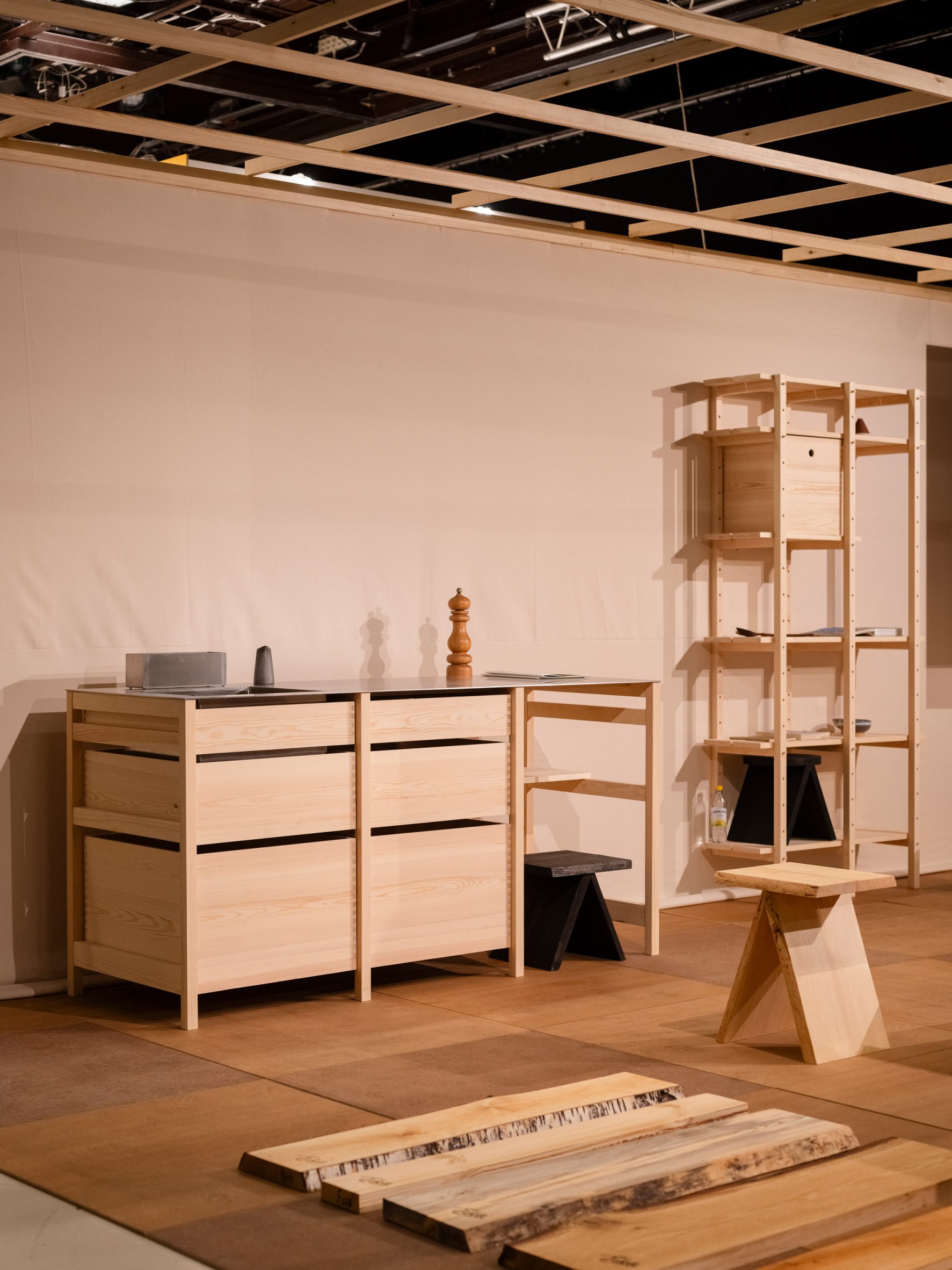
“Pine gets a really nice pattern over the years,” the architect said. “The table that we treated with linseed oil we’ve had in the office for two years and we wanted to let people see how it has aged. For 98 per cent of its lifetime, it will look like this.”
According to Nadén, the material’s popularity now is partly down to the cyclical nature of trends, but also the fact that pine is a good material to use for DIY projects.
“It’s definitely becoming popular again and it has been for a while,” he said. “I think there’s a few different reasons for that – it was popular in the 1970s and then people got fed up, and then it comes back naturally.
“People start thinking: ‘Maybe my dad’s old sofa was quite nice in a way?'”
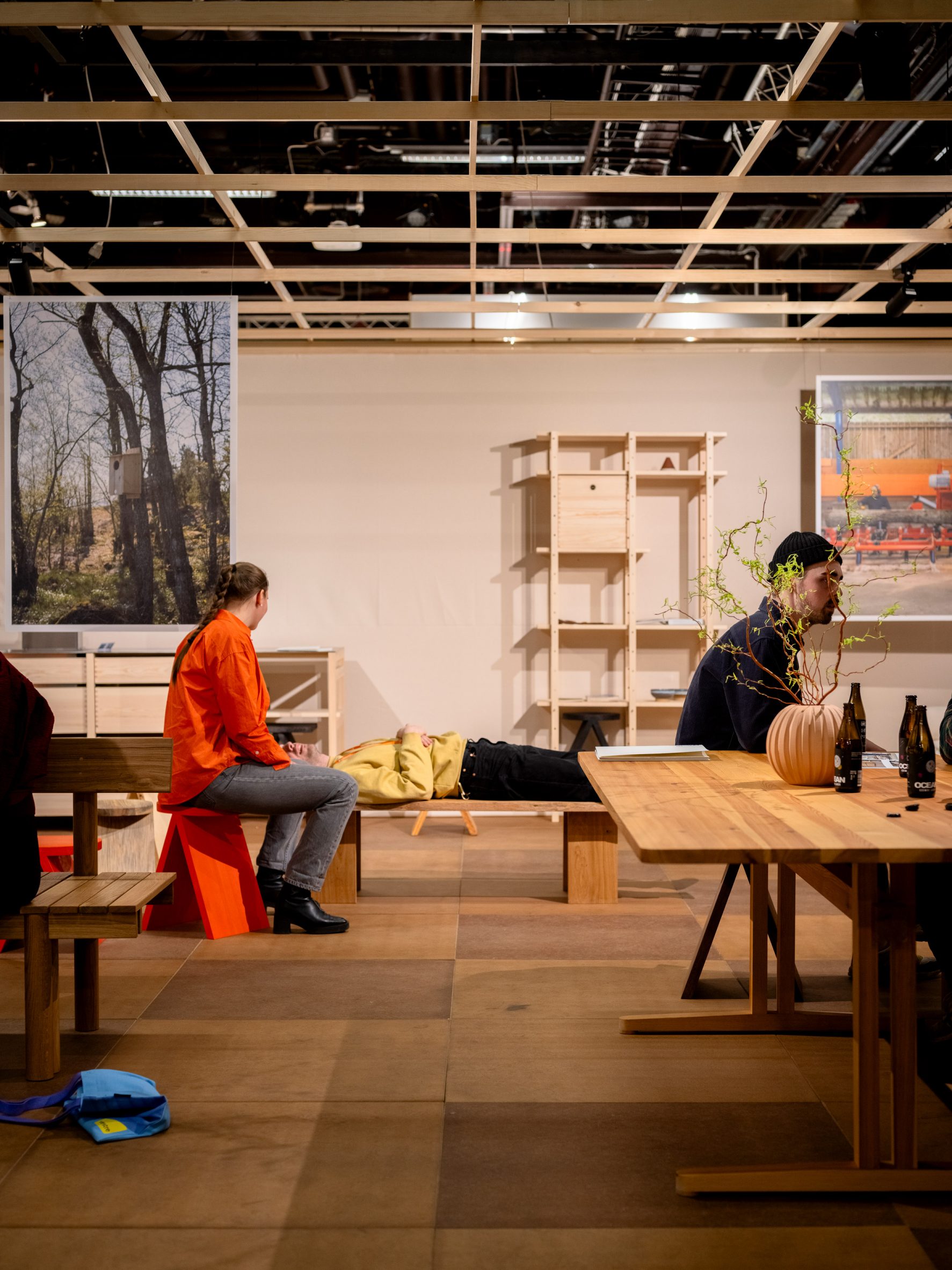
“The other reason is that we have a tendency in society to want to do things locally and maybe combine it with something you make yourself,” he added.
“I can go and buy a piece of wood at the building market and then screw something together. Pine has always been a material that’s used by everyone in society.”
Nadén’s company also works with a type of pinewood that is often overlooked – pinewood that has become wet and waterlogged, often after it was felled, which gives it a darker colour and softly bluish hue.
“It’s because it has some moisture [in it], but that piece of wood is not bad,” the architect said.
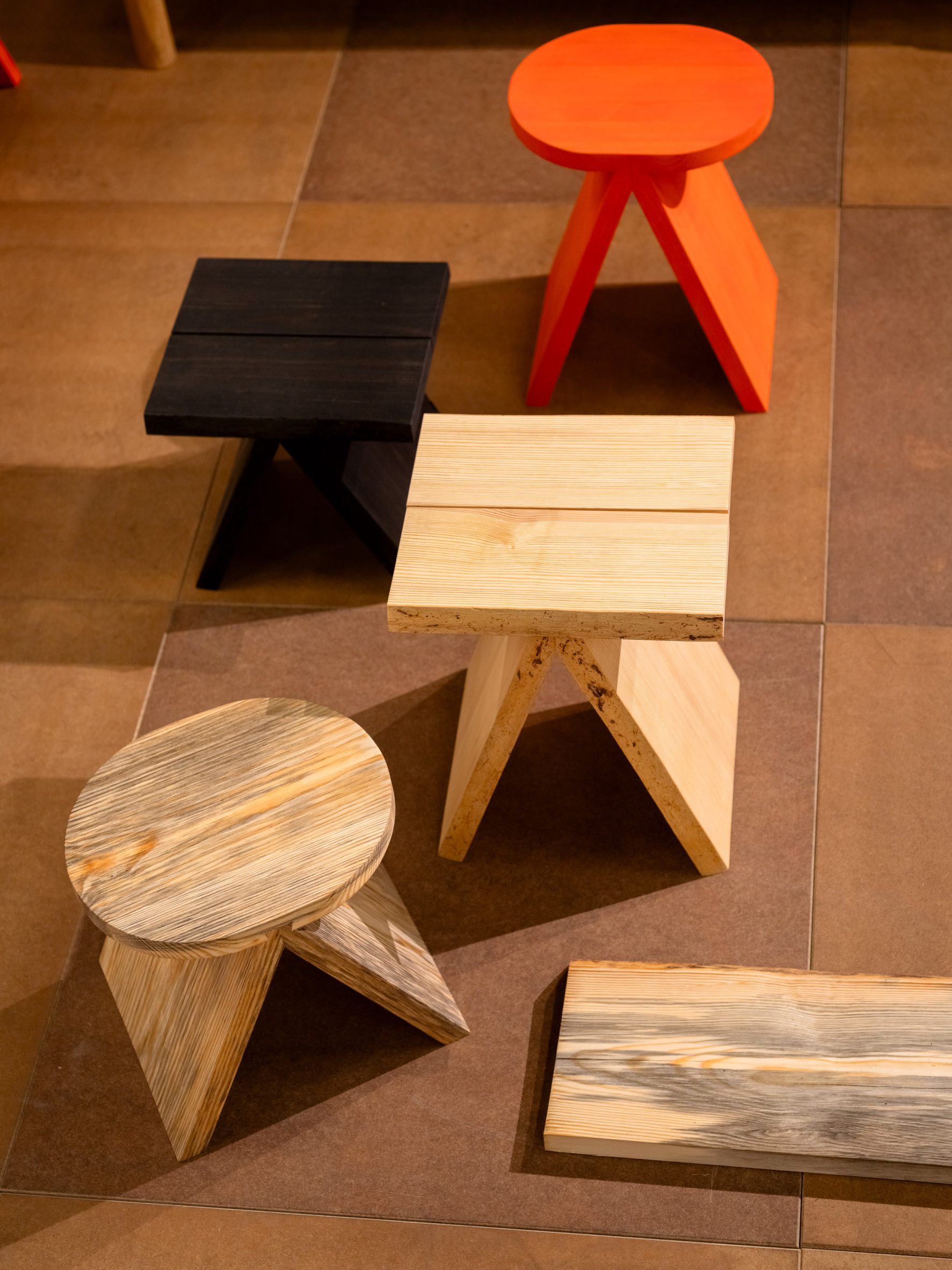
This type of wood is as structurally sound as regular pine, according to Nadén, who believes it should be used more widely.
“Climate change is making the winters warmer and there’s more moisture in the air, so the small window when you can cut the tree gets even smaller,” he explained. “We will see more of this type of pine and if we want to build more with local wood, we need to take care of all types of wood.”
Other projects shown at this year’s Stockholm Furniture Fair include an installation by Folkform that showcased Masonite – a material made from engineered wood – and the global launch of South Korean brand Wekino.
The Stockholm Furniture Fair took place from 7 to 11 February 2024 in the Swedish capital. See Dezeen Events Guide for more Stockholm Dezeen Week exhibitions in our dedicated event guide.
The post Pine makes comeback at Stockholm Furniture Fair as designers embrace “underdog” wood appeared first on Dezeen.
